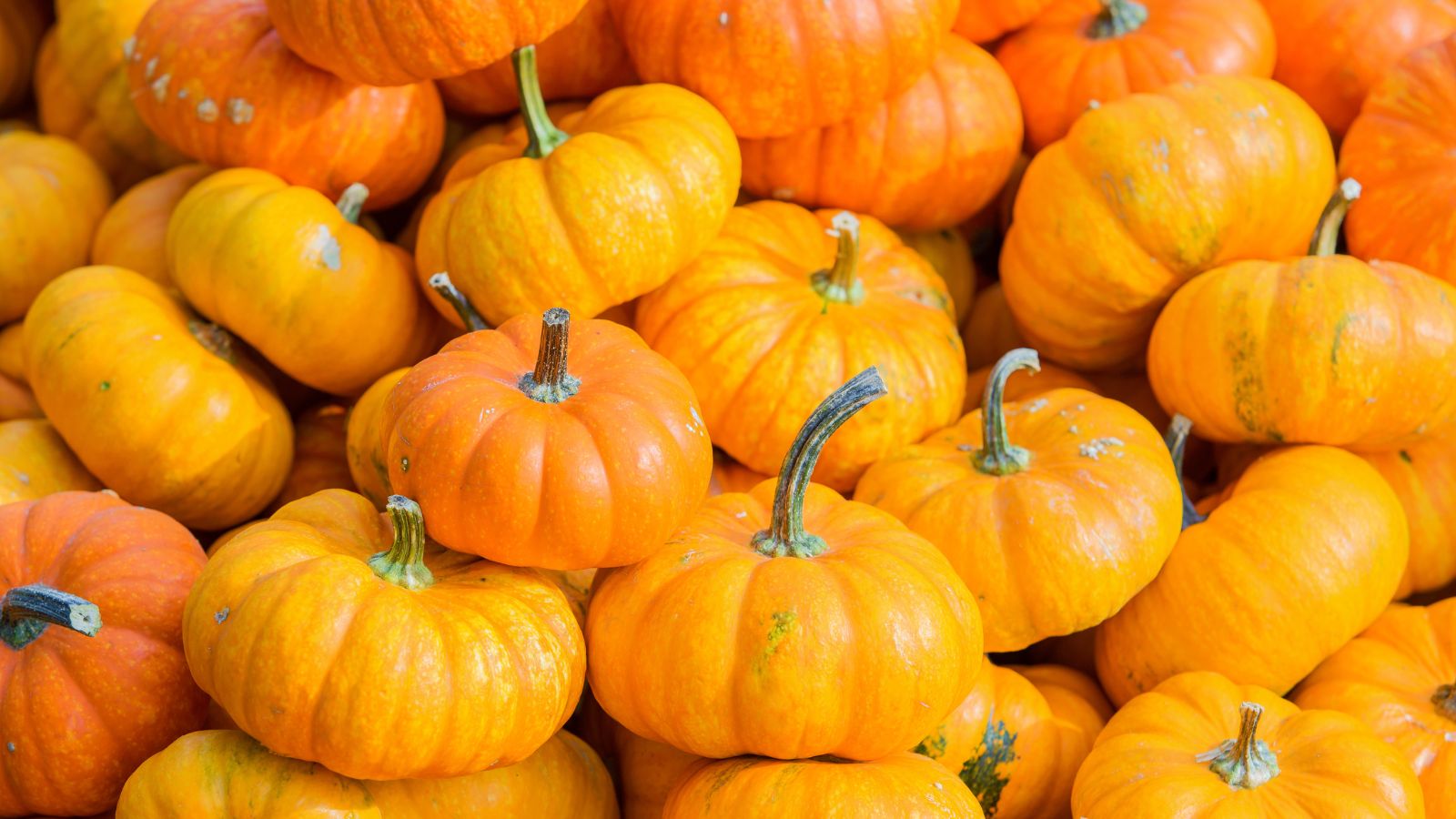
Is a Pumpkin a Berry? The Answer Will Change How You See Fruit
Photo Credit: Canva Pro
A Pumpkin is a pepo—a specialized type of berry with a hard rind—classified botanically as such. It has many seeds and a thick skin.
It grows from a single flower with one ovary. So it's not a vegetable but a fruit. As a matter of fact, this article will show you why pumpkins and even cucumbers are actually berries. Let’s dig in!
🍂 Try These Paleo Pumpkin Cookies Now!
Is a Pumpkin a Berry?
Photo Credit: Canva Pro
When it comes to cooking, most people think of pumpkins as vegetables. But according to plants and botanically speaking, pumpkins are actually pepos, which are big berries. In botanical terms, these fruits are berries because they develop from a single ovary, have soft flesh, and lack a hard pit. They grow from a single flower.
The Botanical Truth About Pumpkins (Botanical Definition)
Pumpkins are flowering plants that grow on vines. In the study of plants, they are structures that hold seeds and grow from the ovary of a flower. The ovary wall gets thicker on the outside over time, while the inside gets soft and full of seeds.
-
Scientific Name: A pepo, which is a type of berry with a tough rind.
-
Plant Family: Member of the cucurbitaceae family, along with melons and cucumbers.
-
Fruit Parts: Has a fleshy interior and many seeds inside.
-
Fruit Origin: Grows from a single ovary of a single flower.
Why Pumpkins Fit the Berry Definition
In botanical terms, pumpkins are exactly what you'd call a berry, which may sound strange in the food world.
-
Fruit Type: A simple fruit, not made from multiple flowers or ovaries.
-
No Pit Inside: Lacks a hard endocarp (stone), unlike fruits like peaches.
-
Rind: Has a thick outer layer that protects the soft inside.
-
Edible Parts: The pulp produced is soft and forms the edible fleshy portion we eat.
Which Vegetable Is Actually a Berry?
Photo Credit: Canva Pro
There are many fruits that we think of as vegetables. Some of them are even berries. We judge things by how they taste or how they are cooked, not by how they grow.
Fruits Commonly Considered Berries
When it comes to plants, some foods that look like vegetables are actually berries. This is because they start as flowers and turn into fruit.
-
Cucumbers: A berry in disguise, part of the cucurbitaceae family.
-
Tomatoes: Often mistaken as vegetables, but true simple fruits.
-
Bananas: Bananas develop from a compound ovary and fit the botanical definition of a berry, though they form from a syncarpous ovary.
-
Pumpkins: Not just seasonal favorites—these are giant berries, too.
Why Some Fruits Don’t Qualify
You could go berry picking like strawberry or raspberry picking, but those fruits don't really fit the botanical definition of a berry.
-
Strawberries: These are aggregate fruits, made from many ovaries.
-
Raspberries: Also aggregates, formed from parts of multiple flower ovaries.
-
Blackberries: Made up of small drupelets, each with a hard endocarp.
Are Pumpkins a Berry or a Fruit?
Photo Credit: Canva Pro
Both are the answers. There are fruits like pumpkins because they come from flowers. They're also berries because they have soft flesh with seeds and grow from a single ovary. In the world of food, we talk about them in a very different way.
From Flower to Berry
Pumpkins start out as flowers and turn into fruits when the ovary wall develops and hardens into the skin while the inside stays soft.
-
Starts As: A single flower from a flowering plant.
-
Berry Forming: Fruit develops from a single ovary into a soft, seeded berry.
-
What’s Inside: An edible fleshy portion with seeds, perfect for soups or pies.
Why It Matters
Learning this helps you tell the difference between terms used in cooking and terms used in plant science. If you know what a real berry is, you can choose fruits that are usually thought of as berries and learn more about how plants grow.
-
Better Understanding: Helps explain why pumpkins fit the berry group.
-
Useful in Science and Food: Bridges plant biology and the culinary world.
-
Good to Know: Pumpkins, especially when canned, have a significantly longer shelf life compared to many fresh fruits due to reduced microbial spoilage.
Is a Cucumber a Berry?
Photo Credit: Canva Pro
The scientific truth is that cucumbers are actually berries. By botanical definition, a fruit is one that has soft flesh, comes from a single ovary, and doesn't break open when it's ready or ripe. Cucumbers are classified as berries botanically, although they are rarely referred to as such in common usage.
Cucumbers and Their Botanical Identity
The Cucurbitaceae family includes both pumpkins and cucumbers. Cucumbers are considered berries because of their internal structure and development from a single ovary—not their shape.
-
Growth pattern: Grows from one flower and one ovary.
-
Fruit design: Has a soft inside with tiny seeds.
-
Skin type: Has a thin outer skin that doesn’t split.
-
Berry relatives: Closely related to watermelons and squash.
Why Cucumbers Are Seen as Vegetables not Flowering Plants
Cucumbers are considered vegetables in the food world because they are crisp and not sweet. This shows how taste can make plant science hard to understand.
-
Common use: Found in salads, sandwiches, and cold sides.
-
Not typical: Rarely used in sweet dishes or dessert.
-
Kitchen logic: Judged by flavor, not structure.
-
Confusion cause: Based on how foods are cooked and served.
How Do Pumpkins Fit Into the Berry Family?
Most people think of small fruits like grapes or blueberries when they hear the word "berry." In botany, though, many fruits that don't look like berries are still thought of as berries. This group includes pumpkins because of how they are shaped, not because of how big or tasty they are.
What Classifies Pumpkins as Berries?
A pumpkin has a soft middle and seeds inside. It grows from one flower and one ovary. It fits right in with the scientific berry group because of this.
-
Berry type: A pepo, which is a berry with a thick skin.
-
Growth habit: Forms on a pumpkin vine from a single ovary.
-
Inside features: Includes a soft, seed-filled center.
-
Defined by: The botanical definition includes seed bearing structure, not sweetness.
Why It’s Useful to Know This
If you know how fruits grow, you can make better food choices and learn more about plants. It also helps you read labels and get better deals when you shop.
-
More knowledge: Connects biology with food facts.
-
Better choices: Know which fruits are best for cooking or snacking.
-
Avoid confusion: Between plant facts and common usage.
-
Everyday surprise: You've probably eaten many fruits that are berries without realizing it.
What Does FullyHealthy Offer for Pumpkin Lovers?
Pumpkin isn't just a fall flavor; it's also a healthy food that can be used all year. FullyHealthy has a lot of great pumpkin-based products that are clean, easy to use, and full of good things for you like fiber and antioxidants.
Pumpkin-Based Products Worth Trying with the Edible Fleshy Portion
With these products, you can easily add pumpkin to your daily diet without having to go through the trouble of making it.
-
Jack’s Paleo Kitchen Pumpkin Spice Cookies: Tasty, allergen-friendly cookies with no gluten or nuts.
-
Wild Zora Tuscan Chicken Soup: A hearty soup with pumpkin, perfect for quick and healthy meals.
-
Farmer’s Market Organic Pumpkin: Pure pumpkin, great for pies, muffins, or soups.
Why These Pumpkin Products Are Special
FullyHealthy is all about real foods and labels that are easy to read. These pumpkin-based foods taste great and are good for you, and they can be used with a variety of diets and ways of life.
-
Diet safe: AIP, paleo, and gluten-free friendly.
-
Easy to store: Long shelf life, especially in canned or sealed forms.
-
Health benefits: Loaded with natural fiber and antioxidants.
-
Seasonal favorite: Ideal for cozy fall recipes and treats.
Final Thoughts
If you know how fruits like pumpkins work scientifically, you can see why they are called berries. Pumpkins are botanically defined as fruits that grow from a single flower, have seeds, and are fleshy on the inside.
They don't taste sour like cranberries or look like grapes, though. Pumpkins have a thick rind and soft flesh, which distinguishes them from some inedible gourds with hard, fibrous interiors. Science doesn't always follow what's written on the package. We can better understand the rice, beans, or pumpkins we eat if we know how they grow, from the stems to the roots.
FAQs
Are pumpkins related to gourds or beans?
Yes, pumpkins are part of the gourds family, but not related to beans, which grow differently and are classified as legumes.
Do cranberries grow like pumpkins on stems?
No, cranberries grow on low shrubs, not vines. But both have stems, fruits, and seeds, even if they look and taste different.
Is pumpkin sweeter or more tart like cranberries?
Pumpkin is mildly sweet, not tart like cranberries. The flavor changes with baking, spices, and preparation.
Do pumpkins have roots and stems like other plants?
Yes, pumpkins grow from roots, with long stems that spread across the ground, much like other gourds and vine plants.
Can pumpkins be used in rice dishes or with beans?
Yes, pumpkin can be added to rice bowls or paired with beans in stews. It’s soft, rich, and absorbs spices well.

Leave a comment